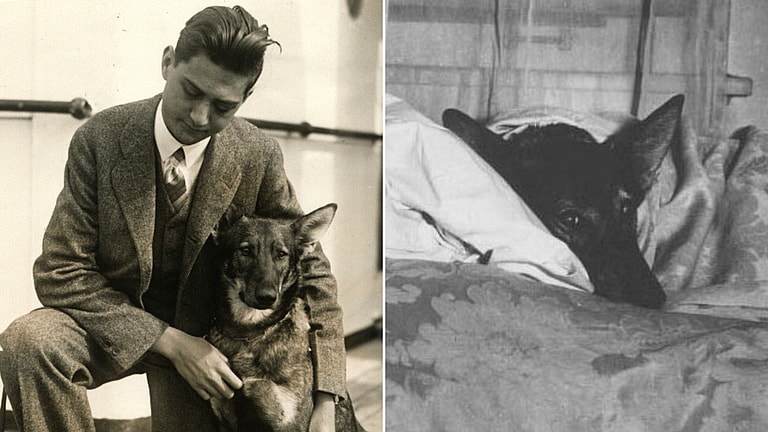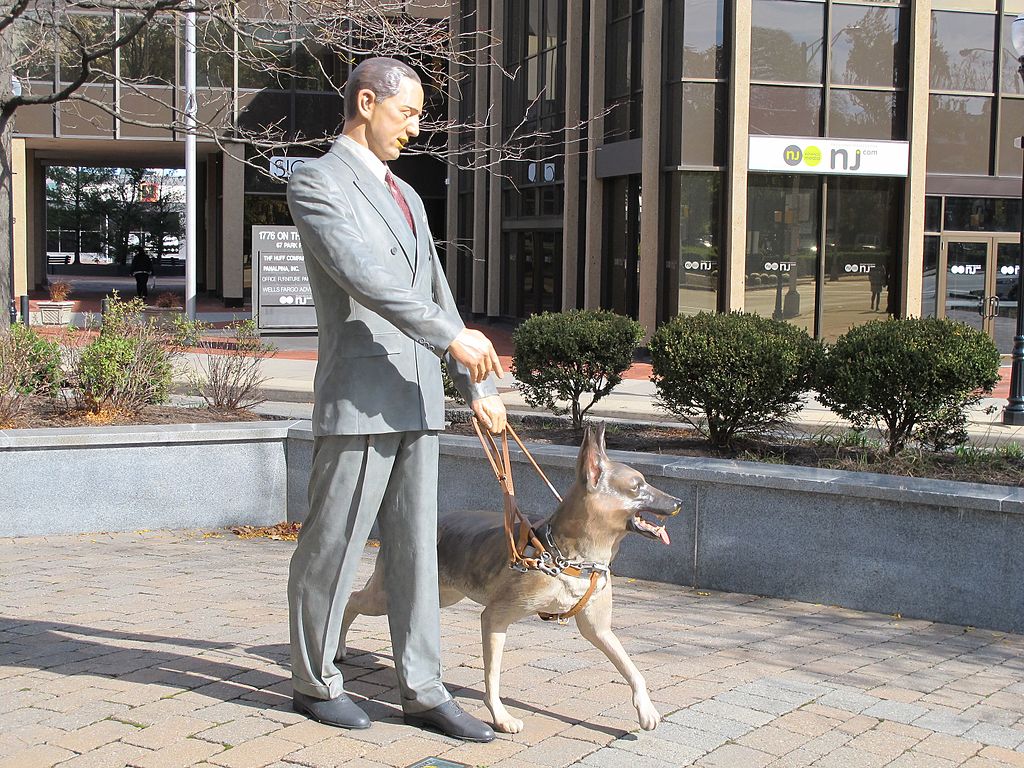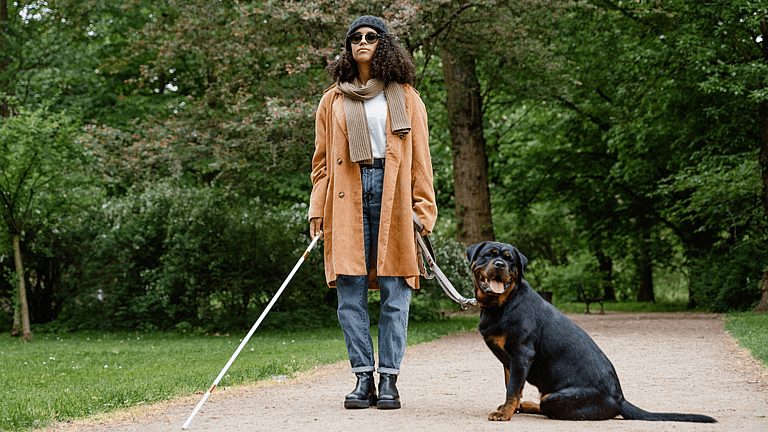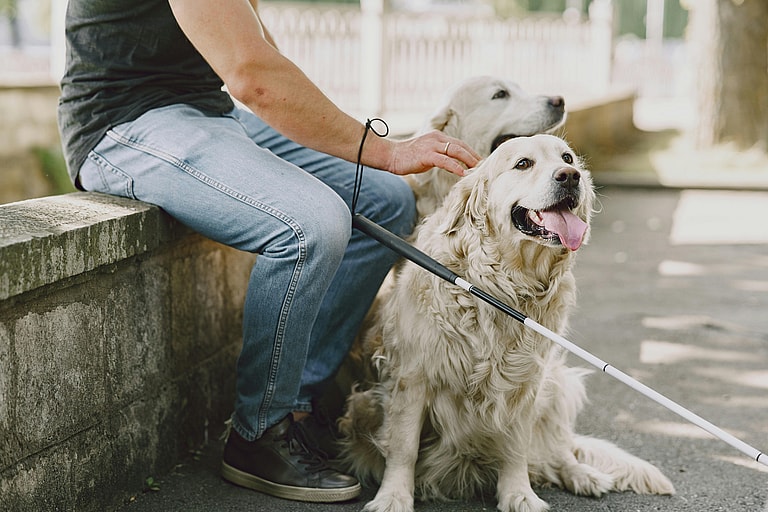The 1st Guide Dog: How a German Shepherd Changed the Lives of the Visually Impaired
In 1928, a German Shepherd named Buddy became the first guide dog in the United States, revolutionizing independent travel for visually impaired individuals. Guide dogs for the blind have since become an invaluable part of society, providing assistance, companionship, and mobility to those in need. The story of Buddy and his handler, Morris Frank, marks the beginning of the guide dog program, an innovation that continues to transform lives today.

The Origins of Guide Dogs for the Blind
The concept of guide dogs for the blind can be traced back to post-World War I Germany. Many soldiers returned from the war blind due to injuries, and there was an urgent need for new forms of assistance. Dorothy Eustis, an American dog trainer working in Switzerland, observed German Shepherds being trained to assist these veterans. Inspired by their effectiveness, Eustis decided to bring the concept to the United States.
Morris Frank, who was legally blind, learned of Eustis’ work and reached out to her, seeking a guide dog for himself. This collaboration resulted in Buddy, a German Shepherd trained to guide Frank safely through the obstacles of daily life. Buddy’s training involved teaching her to walk in a straight line, avoid obstacles, and recognize commands that would keep Frank safe. This marked the first instance when guide dogs were trained to lead the blind in the United States. After Buddy’s success, Frank and Eustis founded The Seeing Eye, the first guide dog school in the U.S., dedicated to training guide dogs for the blind.

What Do Guide Dogs Do to Help the Blind?
Guide dogs for the blind are trained to assist their handlers in navigating the world safely. Their skills include avoiding obstacles, stopping at curbs, and recognizing changes in elevation. They help with crossing streets, maintaining straight lines, and disobeying commands when those commands might put their handler in danger, a concept known as “intelligent disobedience.” Labrador Retrievers, German Shepherds, and Golden Retrievers are commonly used due to their intelligence, temperament, and ability to focus.
Training a guide dog for the blind is a rigorous process. It takes anywhere from 18 to 24 months to fully train a guide dog, beginning with socialization as puppies and culminating in advanced guiding skills. Training programs often involve both guide dogs and their future handlers working together to form a cohesive team.
The Spread of Guide Dog Programs

After Buddy’s success, the use of guide dogs spread rapidly. Guide dogs for the blind locations began to appear around the world, including the Guide Dog Foundation and Guiding Eyes for the Blind. These organizations train dogs specifically for visually impaired individuals, ensuring they receive the support they need for independent travel.
Today, there are guide dog schools and training programs across the United States, such as The Seeing Eye in New Jersey and the Guide Dog Foundation in New York. These schools focus on not only training the dogs but also matching them with individuals to create an effective guide dog team. Individuals interested in acquiring a dog for the blind can apply through these organizations and participate in their training programs.
Differences Between Guide Dogs for the Blind and Other Assistance Dogs
While guide dogs for the blind are the most well-known type of service dog, there are many other types of assistance dogs that serve people with different disabilities. Service dogs may be trained to detect seizures, alert their handlers to low blood sugar, or provide physical support for individuals with mobility challenges. Unlike guide dogs, which are trained specifically to avoid obstacles and guide legally blind individuals through complex environments, other service dogs are often trained in specialized tasks related to their handler’s particular needs.
For example, a mobility assistance dog may be trained to retrieve items, open doors, or provide balance for someone using a wheelchair. While the training for both guide dogs and other service dogs is intensive, guide dogs for the blind often require more complex training due to their need for “intelligent disobedience”—the ability to assess situations and override their handler’s commands if necessary for safety.
How to Support Guide Dogs for the Blind

The training and care of guide dogs are costly and rely heavily on donations. For those interested in supporting these programs, many guide dog schools, such as the Guide Dog Foundation, offer options for donating to help continue their work. Donations go towards the care, training, and matching of guide dogs with visually impaired individuals, helping to provide them with the independence and mobility that these incredible dogs offer.
If you’re wondering how to donate to guide dogs for the blind, most guide dog programs have online donation options where individuals can contribute. Additionally, some airlines are required to accommodate guide dogs for the blind, ensuring these dogs can travel with their handlers when needed.
The Lasting Legacy of Buddy and Modern Guide Dog Teams
Buddy’s role as the first guide dog for Morris Frank in 1928 marked a pivotal moment in disability support. German Shepherds were initially the primary breed used for this purpose, but today, Labrador Retrievers and other breeds are equally prominent in guide dog training programs. The relationship between a guide dog and their handler is a partnership that extends far beyond just physical guidance; it creates a bond of trust, confidence, and empowerment.
For over 90 years, guide dogs have continued to evolve, with training methods improving and new schools and programs popping up worldwide. Thanks to pioneers like Dorothy Eustis and Morris Frank, the lives of thousands of legally blind individuals have been transformed, allowing them the freedom to live independently with the help of their guide dog companions.
“Working with dogs like my blind Cane Corso, Kobe, has given me an even deeper appreciation for the bond between guide dogs and their handlers,” said Rocky Kanaka, pet rescue advocate. “These dogs rely on their other senses to guide their humans, just as Kobe relies on his heightened senses to navigate his own world. It’s a reminder of how adaptable and intuitive dogs can be, and how they have the ability to change lives—not just their own, but the lives of the people who depend on them.”



